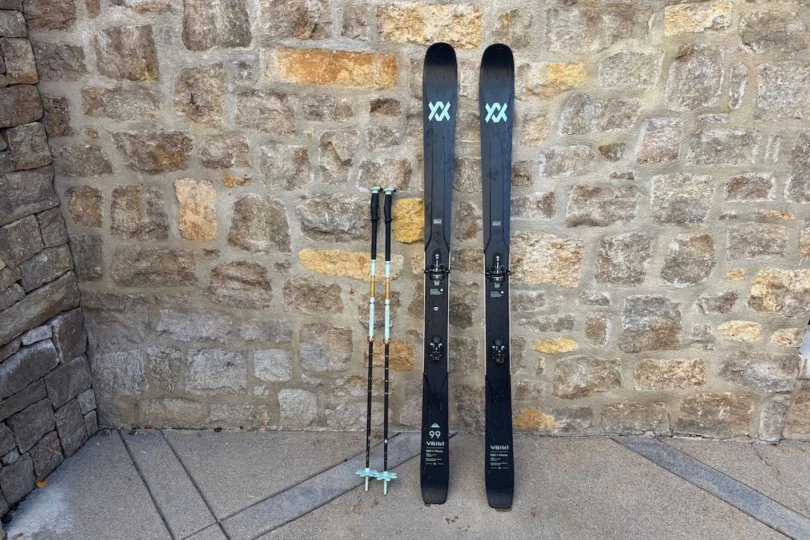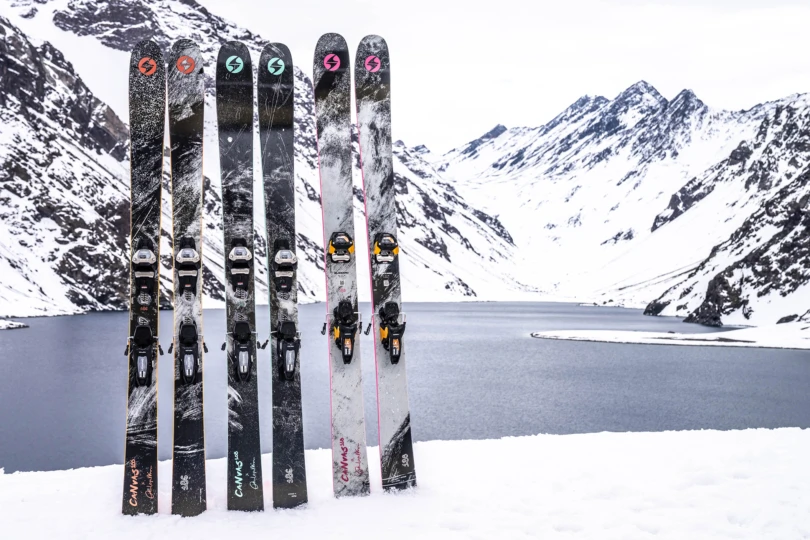Carbon fiber, Kevlar, and the patented DynaLock adjustable closure combine in the light, compact, sturdy MSR Ascent Pole.
MSR will release a backcountry pole line in September that includes full aluminum, aluminum/carbon, and full carbon models.
We’ve been testing a pre-production sample of the top-of-the-line, all-carbon DynaLock Ascent Poles since February. We’ve subjected the $150 poles to abuse ranging from training missions in Texas to ski touring in Alaska.
While incredibly light and durable, the collapsible, three-piece MSR DynaLock Ascent Pole is still stiff enough for aggressive use. An advanced carbon-Kevlar composite and a reliable DynaLock adjustable closure produce an elite class of backcountry trekking pole for discerning adventurers.
Looking for a new set of trekking poles? Check out how the DynaLock Ascents compare to the rest of the market in GearJunkie’s Best Trekking Poles Buyer’s Guide.
MSR DynaLock Ascent Pole: Components
 The three-piece shaft employs carbon fiber construction reinforced with Kevlar. This hybrid composite marries the incredible strength and stiffness-to-weight ratio of carbon with the renowned impact resistance of Kevlar.
The three-piece shaft employs carbon fiber construction reinforced with Kevlar. This hybrid composite marries the incredible strength and stiffness-to-weight ratio of carbon with the renowned impact resistance of Kevlar.
A coated inner cable connects the pole’s three sections, which come together under tension via an upper extension sleeve. A standard button lock secures this mechanism, and the patented DynaLock adjusts to the desired length (small 100-120 cm, large 120-140 cm). This locked closure houses a tool-free clamping tension adjustment dial.
And a contoured EVA foam grip with adjustable neoprene straps tops off the pole, with more foam forming a lower gripping option. A standard carbide tip and snow and summer baskets round out the poles, weighing in at 1 pound 1 ounce per pair (with snow baskets attached).
Ascent Pole Holds Up to Abuse
For three months, the MSR DynaLock Ascent Poles were my constant companions whenever I had a pack on my back. The poles also aided ski touring access to ice climbs near Valdez, Alaska.
With loads up to 40 pounds and often on rocky ground, I also trained in the Texas Hill Country for alpine climbing, ice climbing, and backpacking adventures. This subjected the poles to both heavy strain and hard impacts.
DynaLock Is Dependable
I immediately noticed significant advantages with these poles: impressively low weight and a small amount of free play between pole sections (or within the upper telescoping part).
Compared to other poles in my collection, the DynaLock Ascents have the least amount of total movement, particularly at the junction secured by the button lock. This rigidity produced a secure and confident feeling when heavily loading the pole during risky maneuvers, like crossing Alaskan creeks on skis or navigating around boulders on heavily weighted descents during training.
Once the correct tension was determined, the DynaLock clamping mechanism for pole length adjustment never faltered. Even with heavy gloves, I could easily manipulate the serrated metal tension adjustment wheel and large closing lever.
The foam grips were comfortable, even with bare hands, and remained firm with continued use. I also appreciated the foam delivering ample traction when I was sweating heavily during training sessions.
During side hill travel and ascending snowy slopes in the Alaskan backcountry, the lower foam grip came into use frequently. They didn’t slip down, butting up against the DynaLock mechanism instead.
Like all other poles I’ve tested, the carbide tips and baskets showed normal wear from frequent use on rocky terrain. The snow baskets incorporate a catch to assist in raising the televators on MSR snowshoes.
I prefer to go strapless on trekking poles. So, by pushing out the retaining pins, I removed the straps on the DynaLock Ascent and successfully reattached them later.
The production version of the poles will receive an overall boost in strength.
MSR DynaLock Ascent Pole: Conclusions
The MSR DynaLock Ascent’s carbon and Kevlar construction delivers sufficient rigidity and impact resistance for heavy use. It also maintains a weight comparable to the lightest, fastest-deploying, most adjustable styles of poles on the market.
Three months of testing in harsh, widely variable conditions proves the overall durability and the reliability of the DynaLock adjustable closure. MSR has created a serious contender in the world of high-end trekking poles.









